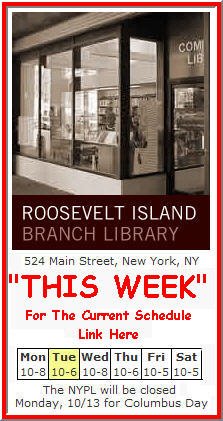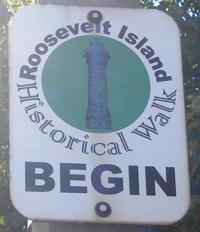
The above and below pictures are snapshots of the Roosevelt Island subway platform (Manhattan and Brooklyn bound) as we got off the steps this morning at 8:07 am. Like most of my experiences at this time the platform has not been overly crowded and the same has gone for the trains.
There is currently a vast difference of opinion between residents and the students from Columbia who are now concluding a study of transportation issues affecting Roosevelt Island. The students spent time on the Manhattan platform and documented their findings via photo snapshots and data collected through at least one sample morning before, during, and following that day's heaviest rush hour period. [Update: If the data was collected from multiple dates I missed that in their verbal and slide show presentation].
There is currently a vast difference of opinion between residents and the students from Columbia who are now concluding a study of transportation issues affecting Roosevelt Island. The students spent time on the Manhattan platform and documented their findings via photo snapshots and data collected through at least one sample morning before, during, and following that day's heaviest rush hour period. [Update: If the data was collected from multiple dates I missed that in their verbal and slide show presentation].
The Columbia findings, to my understanding, concluded pretty much that there is excess capacity and that the trains coming in from Queens can handle the number of residents without issue. They also examined alternative train routes and configurations and determined that a greater number of Queens residents would be displaced with the goal of helping a few Roosevelt Island residents and concluded that changing the train routes would be not accepted by the MTA.

The residents who attended the public presentation two weeks ago strongly disagreed. My own experience is that the problems occur during the 815am to 900am period as the trains are either full coming into Roosevelt Island or riders don't move from the doors making it difficult to enter trains.
Frank Farance, President of RIRA, continues to argue that the study had flaws to which the Columbia students reply look at our proof look at our photos. I can"t argue with the photos in question but I must conclude that the day in question must have been an anomaly as my experience, mirrors my neighbors, that during the peak times there is problem. And during the period just prior to the peak, as I have photographed, the situation is closer to what the Columbia students claim.
The key is I believe that any study may need an increased number of test mornings and also must take into account the residents own experience by perhaps selecting 200 residents who will record their experiences over say a one month period. The record should include the time they enter the station each morning with additional notes regarding wait time, platform positioning etc.
I will not attempt to review the full Columbia study here as I am focusing on the morning subway rush but I do feel that once the students saw their own test results they perhaps did not test on multiple dates ( I may be wring on this one) nor did they get a broad swath of the community involved who live this issue every day.
I do want to thank each of the students for their time and effort as the overall presentation did show that a lot of work went into their studio for each of the segments of our transportatioin issues they adressed.



























The study has an obvious flaw: only one data point (i.e. they only tested one day). One might expect that any particular day should be representative, but that very well might not be the case.
ReplyDeleteBy the way, if the definition of "excess capacity" is that another body will fit on the train, then F trains certainly have excess capacity. The real issues are how to actually cram those bodies into the train and what level of crowd density is within reason.
My own experience is that the F train is averagely crowded for a station that only has one track. Look at the 4/5/6 or 1/2/3 lines on the UES and UWS. Those are constantly crowded much worse than the F. The only time, AFAIK, when it is almost impossible to get into the train at all due to crowding is after a hick-up. People tend to cram into the first train possible no matter how long a delay that creates on top of it. Once the service problem is resolved trains run smoothly again.
ReplyDeleteThe Columbia studio did test on multiple days, but could have presented this information a little better. I think it is generally agreed that more days could have been tested.
ReplyDelete